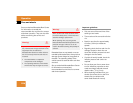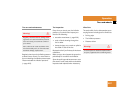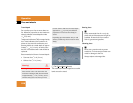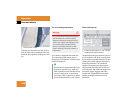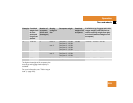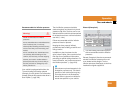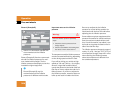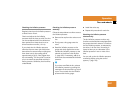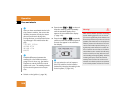
302
Operation
Tires and wheels
Steps for determining correct load limit
The following steps have been developed
as required of all manufacturers under Title
49, Code of U.S. Federal Regulations, Part
575 pursuant to the “National Traffic and
Motor Vehicle Safety Act of 1966”.
Step 1 (Vehicles equipped with placard
Example A)
̈ Locate the statement “The combined
weight of occupants and cargo should
never exceed XXX kg or XXX lbs.” on
your vehicle’s placard.
Step 1 (Vehicles equipped with placard
Example B)
̈ Locate the heading “Vehicle Capacity
Weight” on your vehicle’s placard.
Step 2
̈ Determine the combined weight of the
driver and passengers that will be
riding in your vehicle.
Step 3
̈ Subtract the combined weight of the
driver and passengers from XXX kilo-
grams or XXX lbs.
Step 4
̈ The resulting figure equals the avail-
able amount of cargo and luggage load
capacity. For example, if the “XXX”
amount equals 1400 lbs. and there will
be five 150 lbs. passengers in your
vehicle, the amount of available cargo
and luggage load capacity is 650 lbs.
(1400-750 (5 x150) = 650 lbs.)
Step 5
̈ Determine the combined weight of
luggage and cargo being loaded on the
vehicle. That weight may not safely
exceed the available cargo and luggage
load capacity calculated in step 4.
Step 6 (if applicable)
̈ If your vehicle will be towing a trailer,
load from your trailer will be trans-
ferred to your vehicle. Consult this
manual to determine how this reduces
the available cargo and luggage load
capacity of your vehicle (
୴ page 304).
The following table shows examples on
how to calculate total and cargo load
capacities with varying seating configura-
tions and number and size of occupants.
The following examples use a load limit
of 1500 lbs. This is for illustration
purposes only. Make sure you are using
the actual load limit for your vehicle stated
on the vehicle’s placard (
୴ page 300).





